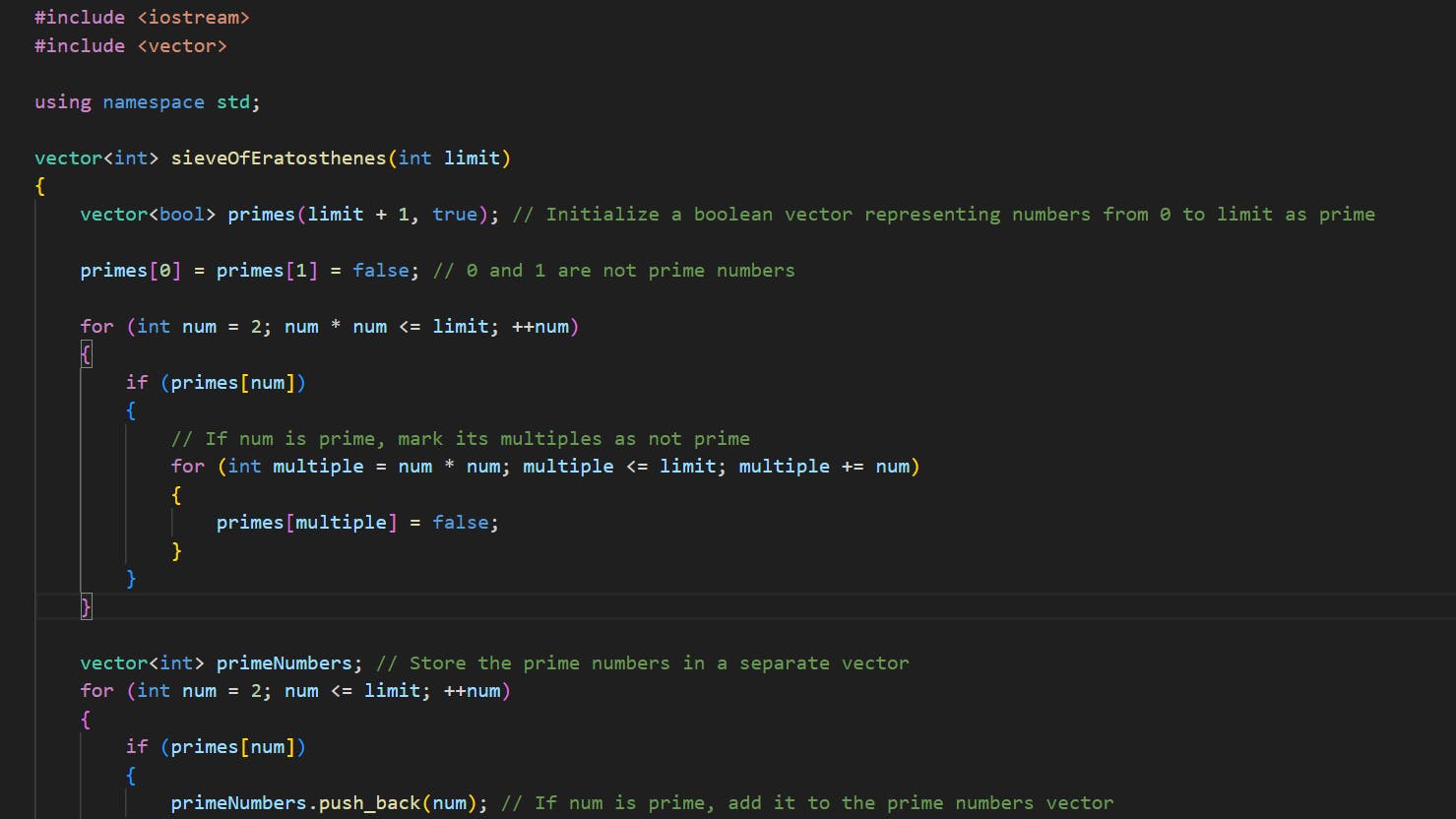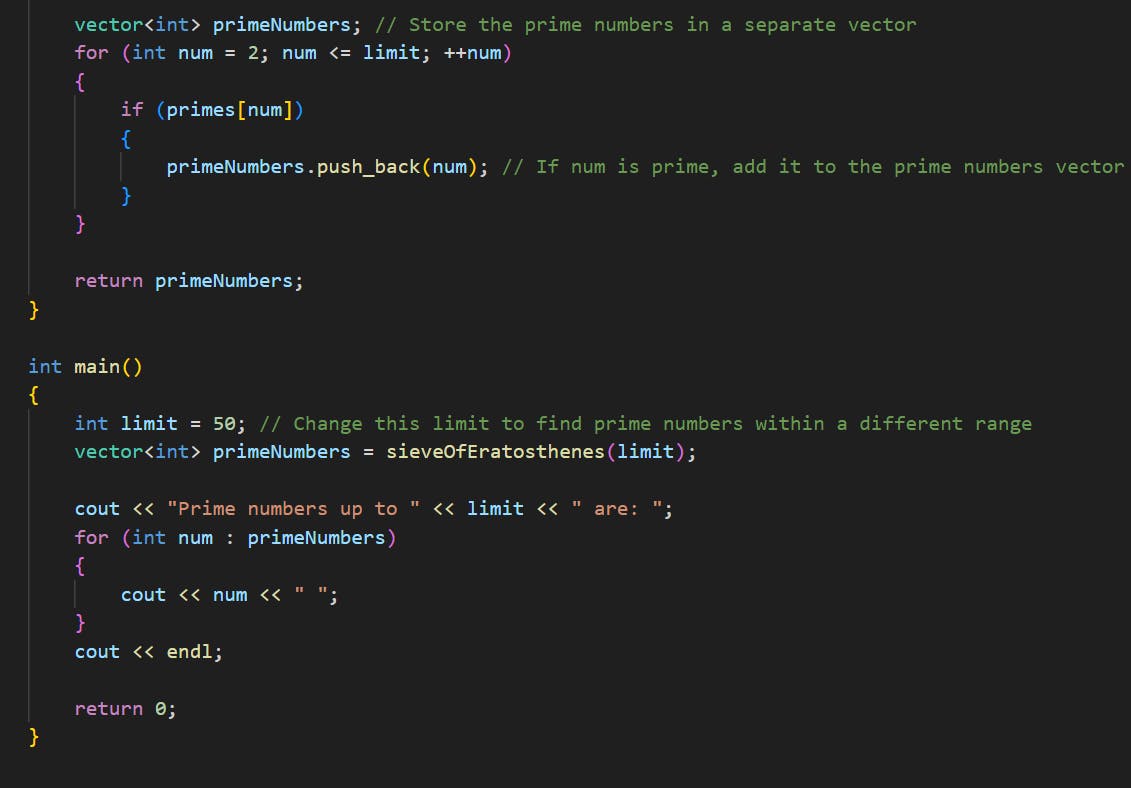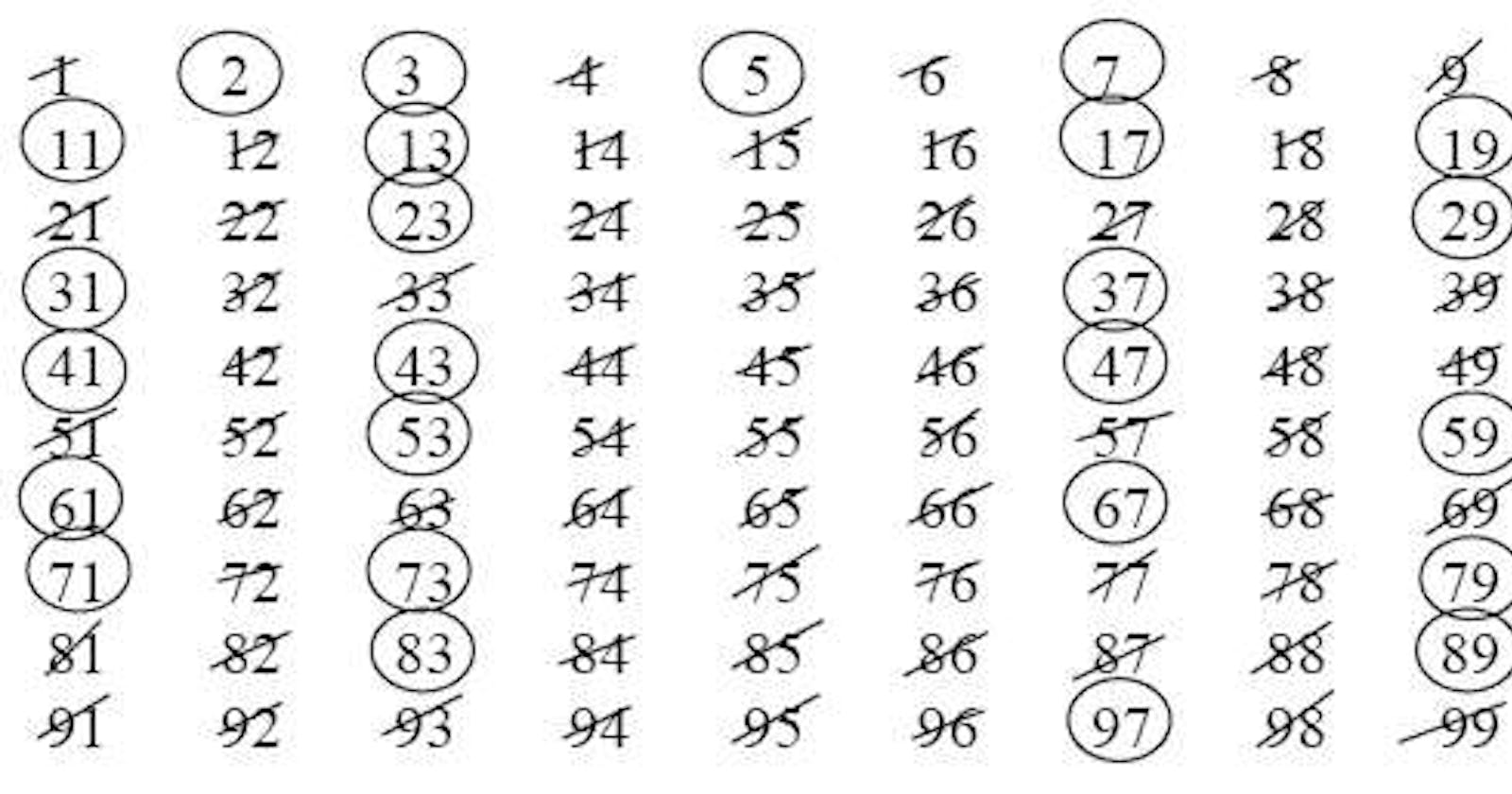Mastering Prime Numbers: Learn the Sieve Algorithm in C++ for Beginners
Efficiently Finding and Counting Prime Numbers with the Sieve Algorithm in C++
Table of contents
No headings in the article.
What are Prime Numbers?
In simpler terms, they are numbers that can only be divided by 1 and the number itself.
Introducing the Sieve Algorithm
The Sieve Algorithm is a brilliant and efficient way to find all prime numbers up to a given limit. How does it work, you ask? Let me break it down into easy steps:
Create a List: First, create a list of numbers from 2 to your desired limit.
Start Crossing Off: Begin with the first number in the list (which is 2) and cross out all of its multiples. Move to the next number that hasn’t been crossed out and do the same.
Repeat: Repeat step 2 until you reach the end of the list. The remaining numbers that haven't been crossed out are your prime numbers!
Here's the Sieve Algorithm implemented in C++ with explanations for beginners:


Explanation:
#include <iostream>and#include <vector>: These are header files for input/output operations and vectors, respectively. They allow us to use functions likecoutfor output andvectorfor dynamic arrays.vector<bool> primes(limit + 1, true);: This line creates a vector of boolean values initialized withtruerepresenting numbers from 0 to thelimit. Initially, all numbers are considered prime.for (int num = 2; num * num <= limit; ++num): This loop iterates through numbers from 2 to the square root of the limit. Ifnumis prime (marked astrue), it marks its multiples asfalse.vector<int> prime numbers;This line creates an empty vector to store prime numbers.for (int num = 2; num <= limit; ++num) { if (primes[num]) {prime numbers.push_back(num); } }: After marking non-prime numbers, this loop goes through the boolean vector. If a number is marked astrue, it means it's prime, so it's added to theprime numbersvector.cout << "Prime numbers up to " << limit << " are: ";This line prints a message indicating the range of prime numbers being displayed.for (int num : prime numbers) { cout << num << " "; } cout << endl;: This loop prints the prime numbers stored in theprime numbersvector.Conclusion
In conclusion, the Sieve Algorithm is an efficient method for finding prime numbers up to a given limit. By understanding and implementing this algorithm in C++, beginners can enhance their coding skills and explore the fascinating world of prime numbers. With practice and curiosity, you might even contribute to significant mathematical discoveries in the future. Happy coding!
Feel free to customize the blog as per your style, and don't forget to add any additional information or examples if you feel they would enhance the understanding of the topic for your readers. Good luck with your blog on Hashnode!

